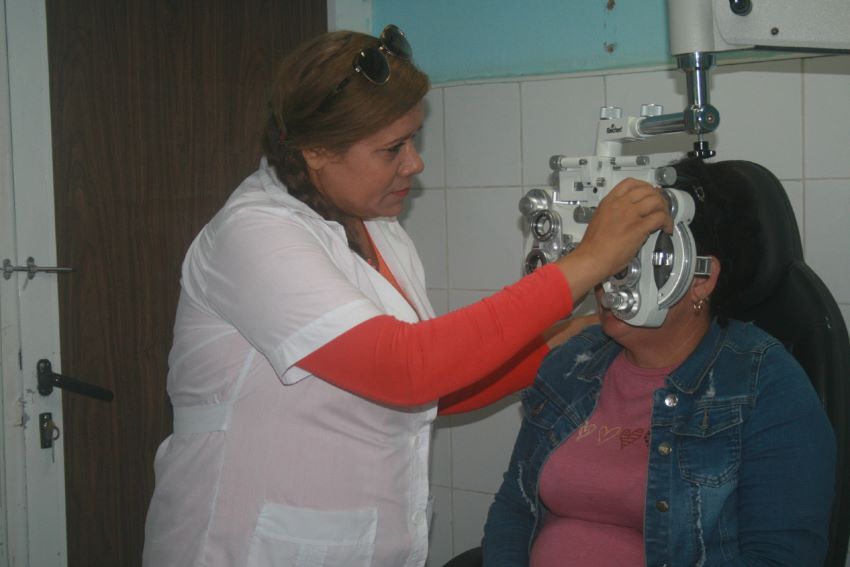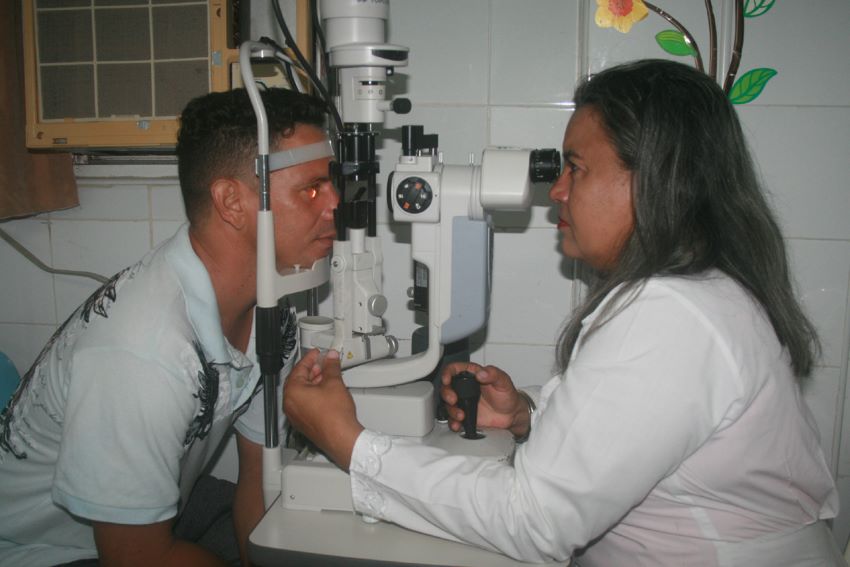
As World Glaucoma Week finishes, 26 delves into the disease, the first cause of blindness in Las Tunas, and the whole Island.
Juan gloated about having eagle vision. At home, he was the one who threaded the sewing needle when the younger ones failed. He read the newspaper without glasses, and later, like many of the elderly, he became addicted to mobile phones and social media. His daughters joked about the quality of those septuagenarian eyes untouched by time.
Without saying anything, he began noticing that he had difficulty seeing well on cloudy days, "Everything was like opaque." He also noticed that, in the evenings, he would bump into the coffee table, but he didn't think much of it, thinking that these problems were related to old age.
Three days before his 73rd birthday he woke up with a "blurred curtain" across his pupils. In the morning, he began to see colored halos around the lights and his eyes became red. He decided to eliminate screen exposure for a period, but in hiding from his family, he continued to snoop on Facebook.
Faced with tangible deterioration, he went to the ophthalmologist's office and the prognosis came without warning: he had advanced glaucoma, with a high probability of losing his vision completely in the short term.
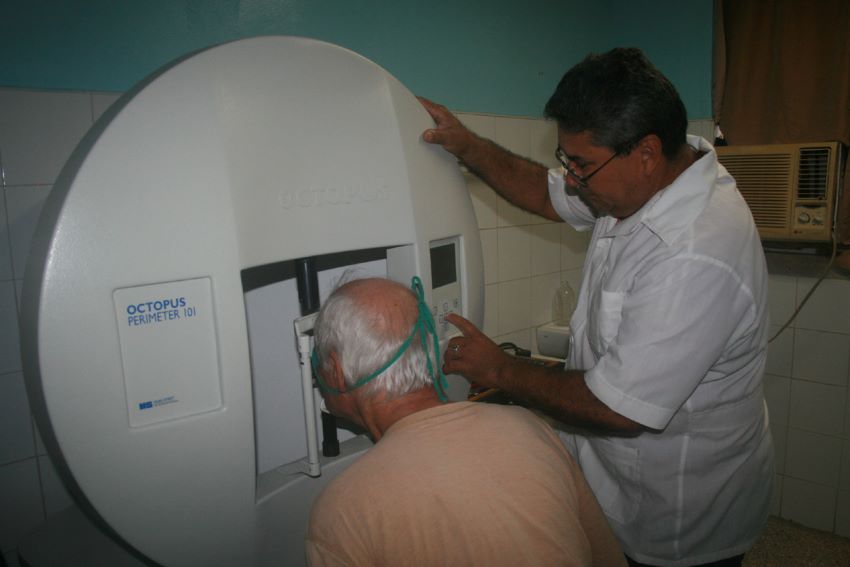
...
Like Juan, full of despair and darkness, several patients come to the consultation of Dr. Noraidis Suárez Estévez, a second-degree specialist in Ophthalmology, with vast experience in the management of a disease that is often known as "the silent thief of vision." Until July 2023, it was the fundamental reason for total visual disability in Las Tunas, as the Provincial Commission of Medical Labour Assessment decreed.
The doctor shares with 26 her concern for this illness in such an aging population as that of the Balcón de Oriente (Eastern Cuban Balcony) and emphasizes that, on an international level, in Cuba, and the territory, it is the first cause of irreversible blindness.
She warns that statistics from the World Health Organization (WHO) report a prevalence of blindness due to this ailment of 64 million people between 40 and 80 years of age at the end of 2010, with an increase to 76 million in 2020, and a projection of rising to 111.8 million in 2040.
"Vision loss from glaucoma is preventable when we can diagnose, treat, and control it promptly in its early stages," she emphasizes. "Among its risk factors, age is important in aggravating the epidemiological picture."
The probability of suffering from it increases "from 40 onwards, increases after the age of 60, and can be more than 82 percent after 70. We always insist on going to the hospital in case of any symptomatology that deviates from normality," warns the doctor.
Why do glaucoma patients go blind?
Above all, because of the asymptomatic course, with a slow and progressive nature, associated with late diagnosis and inadequate monitoring, in most cases," she explains. In addition, because of non-compliance with follow-up consultations and treatment as prescribed. There is also a low perception of the risk of blindness.
Why are people not able to perceive their impairment of visual function?
"The peripheral vision is most affected in glaucoma, and where the damage begins; it is -in other words- the vision with which, without having to move our head, we can perceive the whole of the immediate environment. Many people have an advanced stage of the disease, the optic nerve is atrophied but they conserve their central vision with 20 out of 20 so that they can carry out everyday activities such as reading, sewing, cooking, etc. without much difficulty."
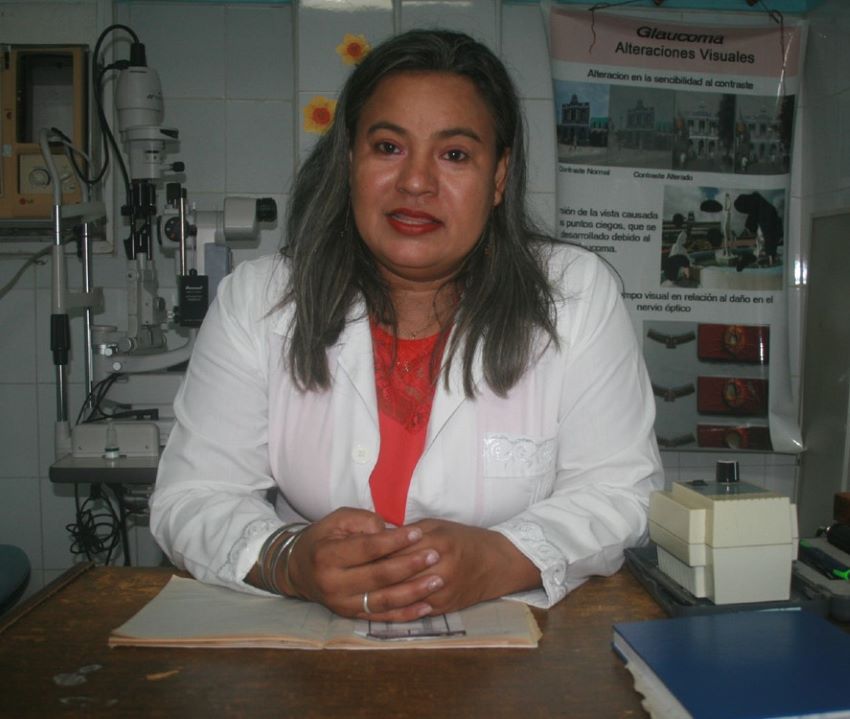
"They also have difficulty seeing at night (nyctalopia). The cells responsible for night vision are called rods. They are found in the retina and are located more abundantly in its periphery, where the deterioration in the patient's visual field begins. These patients often describe seeing rings around artificial lights; they may also report burning, stinging, pricking, tearing, dryness, itching, eye pain and/or tiredness, and a foreign body sensation."
What other problems can be suffered because of vision loss due to this cause?
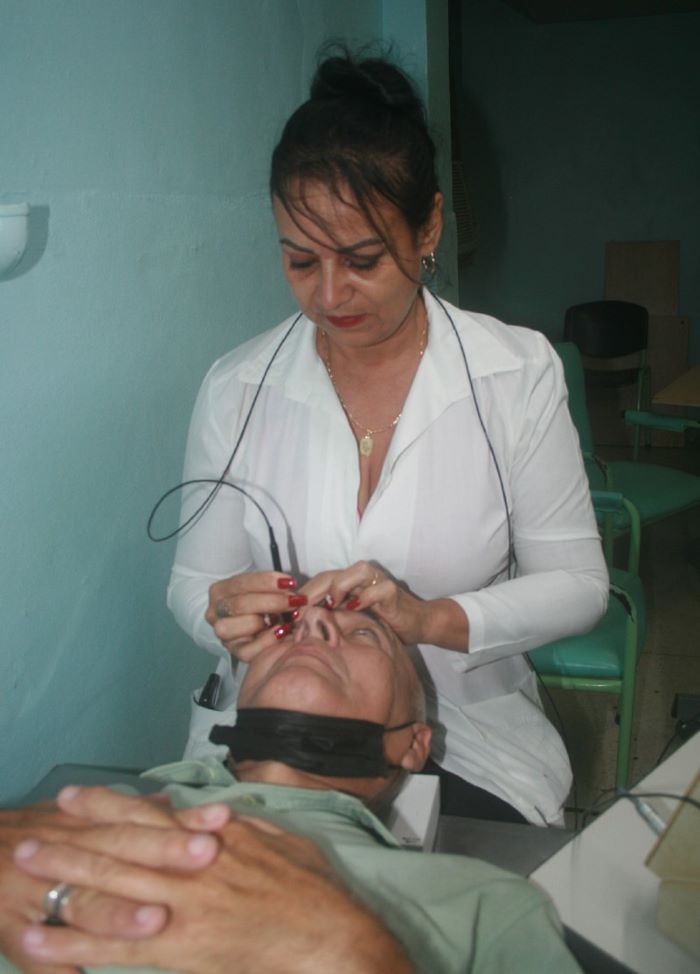 "Vision impairment severely affects the quality of life of the adult population. The labor market participation and productivity rates of those with impaired vision are increasingly lower. This results in high levels of depression and anxiety."
"Vision impairment severely affects the quality of life of the adult population. The labor market participation and productivity rates of those with impaired vision are increasingly lower. This results in high levels of depression and anxiety."
"Glaucoma sufferers are prone to visual impairment, which can contribute to social isolation, and often have difficulty walking, climbing and descending stairs; they are prone to falls and fractures from minor accidents in the home and on the street, and to burn injuries when doing kitchen work. At the same time, they are also more likely to be admitted early to nursing homes."
The call from expert Noraidis Suárez Estévez, and the province's Ophthalmology Center (located in the Dr. Ernesto Guevara de la Serna General Teaching Hospital), is to seek professional help for any difficulties in this regard, regardless of age limits. From her daily experience, good prognoses emanate for those who obtain a timely opinion and treatment. The fight against blindness is possible, she assures.
"The diagnosis of glaucoma is the responsibility of the ophthalmologist; however, to be able to diagnose it early or in non-advanced stages, the action and collaboration of the basic working group of Primary Health Care (PHC) together with the family doctors are indispensable; the approach from this level is essential.
...
Currently, in Cuba, the prevalence of blindness is 56,000 people, one for every 200 inhabitants, and the prevalence of low vision is 180,000. Among the main causes of bilateral blindness in adults, glaucoma is in second place; however, it is the leading cause of blindness that is not curable but preventable. It is estimated that 50 percent of cases are undiagnosed, even in First World countries.
It is a multifactorial disease that is most prevalent in blacks. High intraocular pressure is the main risk factor but refractive, cardiovascular, and neurological disorders, and systemic conditions such as hypertension and diabetes mellitus, plus the use of steroids and hormonal contraceptives are also factors.
